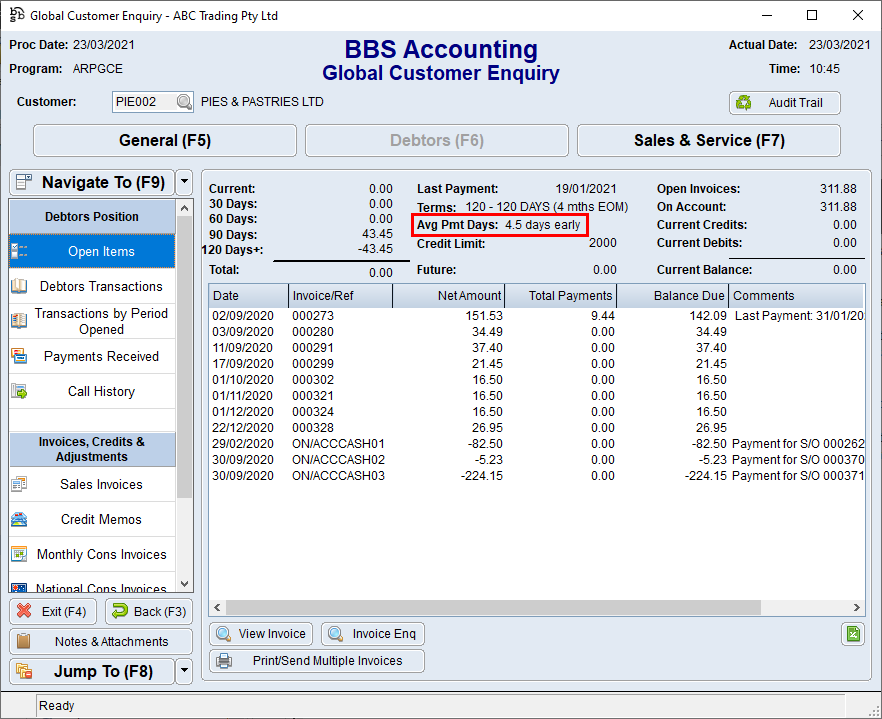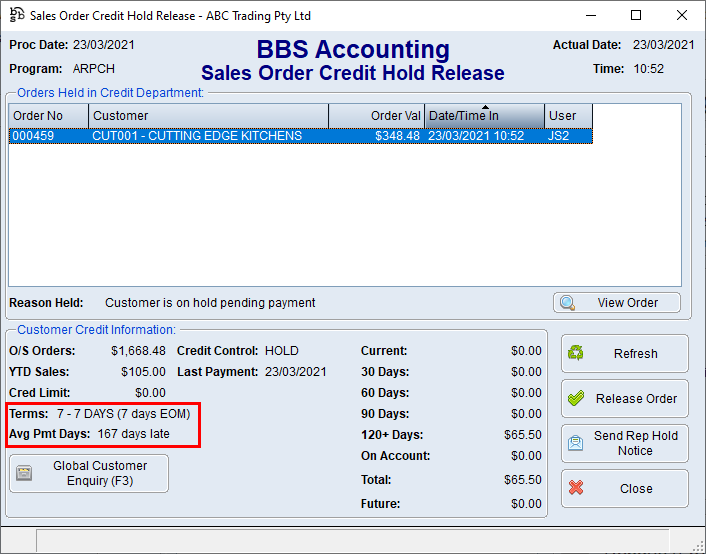A feature has been added that will calculate an ‘average payment days’ for each customer using a complex algorithm.
The algorithm takes into account:
1. Invoices raised in the last 12 months, excluding the current month, that are fully paid. Unpaid or partially paid invoices are ignored.
2. The number of days early or late that an invoice is paid are calculated for each invoice, based on the number of credit days permitted on the terms code on the invoice.
3. Invoices are then weighted by value to ensure that larger invoices that a customer may put off paying have a larger impact on the result than smaller invoices do.
4. An average number of payment days is then calculated for each month, and a weighting is applied so that the most recent months carry a higher weight than previous months. This allows for a trend to be introduced into the calculation.
The average payment days will recalculate automatically each night, and also when payments are posted to a debtor account via Debtors Posting.
In the Global Customer Enquiry, Open Items tab the MTD Sales and YTD Sales fields have been removed and the Average Payment Days is displayed instead. It will now show either the number of days early or the number of days late on average that the customer pays. This will display either ‘On-Time’ if the customer averages payment exactly on the due date of their invoices, or ‘No Data’ if the customer has had no invoices in the last 12 months that are fully paid.
Both MTD Sales and YTD Sales can still be accessed via the Sales & Service (F7) section, Total Sales tab.

Global Customer Enquiry Screen
This field has also been added to the Sales Order Credit Hold Release screen, as well as the Terms code, description and terms days.

Sales Order Credit Hold Release Screen
This field has also been added to the Customer Masterfile Listing/Report:


The Debtors Aged Trial Balance (summary and detail versions):


And the Send Payment Reminders Report:
